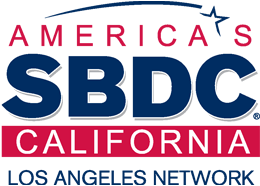Hiring the right people for your business is one of the single most important pieces of building a path toward success. This can be challenging when you’re just starting and have limited resources, so maximizing what you can offer is crucial. This article explores ways to up your hiring game. The best part is, these changes can be implemented relatively quickly and without draining resources.
Be Flexible
Understanding your employees work styles can greatly enhance the quality of work you receive.
By showing that, as an employer, you care about your team’s daily well-being, you’re more likely to foster desires to please and be productive. This is in contrast to employees who feel like their needs are largely ignored which can breed resentment and lead to poor performance and higher turnover. Over the years, workplace flexibility has evolved to meet the needs of both employees and employers. As people are working more, raising families and trying to maintain a healthy work-life balance, employers are finding ways to accommodate their team, without sacrificing quality. Here are a few examples of common flexible work arrangements:
- Flex Schedules, this could include time in and time out or working longer days Monday through Thursday to get Friday off.
- Job Sharing
- Phased Retirement
- Telecommuting
Of course, any arrangement can work as long as both parties understand each other’s expectations and strive to meet them. At the end of the day, that’s really what flexibility is all about: listening to each other’s needs and finding ways to satisfy them, so that everybody wins.
EXPERT ADVICE
Malcolm Geffen, entrepreneur, CEO and University of La Verne SBDC business consultant named flexibility as one of the chief ways to improve organizational behavior. He warns against trying to fit square pegs in round holes, saying that ultimately it’s a waste of energy and resources.
Citing his own experience, Geffen explained how he chose to work with employees rather than against them, which ultimately led to better results. He cited an example where he noted challenges by some employees to be productive in the morning, including getting to work on time. Geffen’s solution was to offer flexible hours, communicate expectations clearly, and measure performance to see if that helped the situation. In fact, it did.
REAL RESULTS
According to a recent survey by WorkplaceTrends.com published in February 2016, organizations saw impressive yields from their work flex programs, including: improved employee satisfaction (87%), increased productivity (71%), current talent retention (65%). 69% use their programs as a recruiting tool and 54% said that their programs positively impacted their recruiting.
PROMOTE FROM WITHIN, WHENEVER POSSIBLE
When hiring, do you try to find talent within your company or expand your search beyond the corporate walls? Human Resource experts call this the “build it or buy it” million-dollar question.
According to SBDC’s consultant Geffen, promoting from within is always a desirable option, WHEN it makes sense.
“If you promote from within then your employees know there’s the potential for growth, which makes the job more appealing. That’s not always practical, of course. But, if all things are equal, choose the person already working for you,” he advised.
Relationships within a corporate culture are also valuable assets that hiring managers often overlook. For example, an existing employee will have an advantage over an outsider in knowing who to engage for certain tasks or projects, this social capital necessary to get things done is not present with a newcomer – that’s something that takes time to develop.
Geffen recommends looking at the talent you have currently in place. Using an organization chart, like the one here, which is a functional structure, is a helpful visual aid in assessing the talent available to you now and identifying any skill gaps in your company. It can also help identify where various employees can ascend to from their position.
GROOM EMPLOYEES FOR THE NEXT LEVEL WITH SUCCESSION PLANNING
One way to ensure the talent within your company is ready for that promotion is to create succession plans. By grooming employees for the next level, you’re creating a positive culture that’s ready to react quickly to upper- level management turn around.
According to a report by Central Washington University (CWU), succession planning should be built into a company’s strategic planning process. By thinking ahead, you may be able to avoid unexpected interruptions in your regular workflow. For example, if you have a senior graphic designer who’s an integral part of your business and he or she quits, you’re left scrambling to fill that vacancy. But what CWU and other experts propose is to groom a junior member of the team to fill that spot when the time comes, either because of promotion, termination or resignation.
According to Stanford’s Graduate School of Business, here are some important elements for an effective succession plan.
EFFECTIVE SUCCESSION PLAN CHECKLIST
- A shared vision of the future direction of the company
- A skills and experience profile for the next CEO
- A skills and experience profile for critical senior executive positions
- Identification of top internal talent and development of a growth plan for each
- Avoiding a “cloned culture” by identifying candidates with diverse backgrounds
- Identification of top external candidates as a benchmark
- Fostering a culture of executive development
- Providing opportunities for the board to meet with and mentor promising senior executives *Stanford Graduate School of Business, 2014 Report On Senior Executive Succession Planning And Talent Development
DON’T WAIT TO REWARD GREAT WORK
Geffen advises not to wait on handing out bonuses or raises, instead he believes there’s no time like the present when an employee deserves recognition.
“One way to keep employees happy is to give them raises. I didn’t wait to give an outstanding employee a raise. If I saw someone going over and above their duties, I would reward them right then and there,” Geffen told SBDC.
A Harvard field study conducted by Duncan Gilchrist, Michael Luca, and Deepak Malhotra asked the question: “Do employees work harder when they are paid more?” The simple answer, according to their findings, was it depends on how the raise was framed. If the raise felt like a gift and something the company was not obligated to do, then workers were much more inclined to work harder than those who perceived the raise as an obligation or what other companies were also doing.
This goes back to Geffen’s point that tying a raise to certain behavior may signal appreciation and respect by the employee, something that will likely make them perform at their current level or even better.
In short, attracting and keeping a great team depends on leveraging your assets in a way that makes people feel good to be working for you. To learn more about how the SBDC can help you create a strategy for success, visit smallbizla.org/services
Up Your Hiring Game: How to Hire and Keep an Effective Team pdf
 Contributing SBDC Consultant: Malcom Geffen
Contributing SBDC Consultant: Malcom Geffen
Malcom specializes in professional management and corporate turnaround work at the SBDC hosted by University of La Verne. Malcom’s bio






